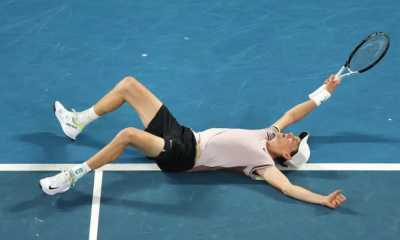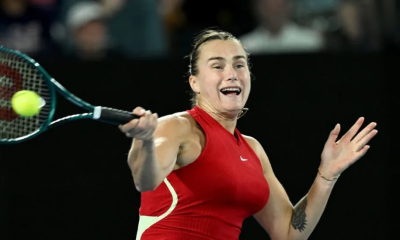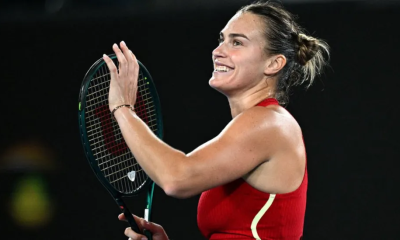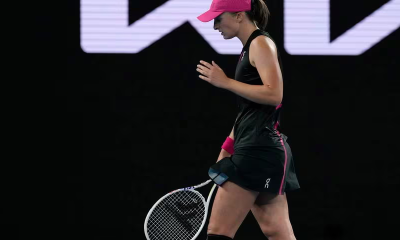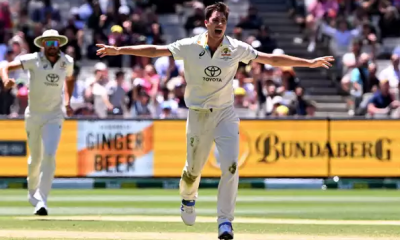Latest News
Aryna Sabalenka beats Zheng Qinwen in Melbourne

Aryna Sabalenka underlined why she had long been considered the Australian Open favourite by overpowering Zheng Qinwen to retain the women’s title.
Belarusian second seed Sabalenka won 6-3 6-2 to claim her second Grand Slam singles trophy without dropping a set.
With 12th seed Zheng backed by passionate Chinese support, a composed Sabalenka sucked the energy out of her opponent and the crowd in a fast start.
She is the first woman to win back-to-back since Victoria Azarenka in 2013.
Sabalenka, 25, who became the strong favourite after top seed Iga Swiatek was beaten in the third round, emulated her compatriot Azarenka by completing victory in little over an hour. “It’s been an amazing couple of weeks and I couldn’t imagine lifting the trophy another time,” said Sabalenka.
Zheng, 21, was playing in her first major final and often looked overawed – by both the occasion and her opponent.
When Sabalenka won in Melbourne last year, the key factors behind her success were remodelling her serve to avoid the double faults which had plagued her and working with a psychologist.
Her development over the rest of the 2023 season led to a a first stint as the world number one and becoming the most consistent women’s player at the Grand Slams.
Sabalenka went on to reach at least the semi-finals at the French Open, Wimbledon and the US Open, losing in the final of the latter to American teenager Coco Gauff after winning the first set.
Returning to Melbourne, the experience of already having won added an extra layer of belief she could do it again. Sabalenka dropped just 16 games on her way to the semi-finals – where she then exacted revenge on Gauff in straight sets – before turning her attention to Zheng.
Executing her aggressive approach to near perfection paid dividends. Sabalenka broke at the first opportunity with a backhand which rocked Zheng, saw off three break points in the next game and continued to force errors from her opponent as she moved towards a clinical victory.
The rare moment of uncertainty in a dominant performance by Sabalenka came when she was trying to close out victory and needed to save a rare break point before taking a fifth championship point.
She took this with a clean forehand cross-court winner, turning to her team with both arms lifted towards the sky before blowing a kiss.
While Sabalenka was trying to replicate the achievement of compatriot Azarenka, Zheng also had a significant moment of history which she was hoping to emulate.
Ten years ago, trailblazing Chinese star Li Na won the 2014 Australian Open to the delight of the nation – and an 11-year-old Zheng who watched on television with her childhood friends.
It would have sparked joyous celebrations – in Melbourne and back home – if Zheng marked the notable anniversary with her own triumph.
In a city with an enormous Chinese community, Zheng was backed by a majority of the 15,000 crowd with excitable fans waving Five-Star Red Flags and homemade banners in their support of a player known as ‘Queen Wen’. However, she was unable to provide the victory they craved.
As well as looking nervy, Zheng could not cope with the pace of Sabalenka’s groundstrokes as the world number two proved too much of a step up in class. “It’s my first final and I’m feeling a little bit of pity but it was a good experience at the same time,” said Zheng, who will move into the world’s top 10 for the first time when the rankings are published on Monday. “I feel complicated because I could have done better but I didn’t in this match.”
(BBC)
Latest News
Bangladesh look to move T20 World Cup matches from India amid Mustafizur row

Bangladesh will ask the ICC to relocate their T20 World Cup matches from India to Sri Lanka, after Kolkata Knight Riders were instructed to release Mustafizur Rahman as a result of deteriorating political ties between Bangladesh and India.
The BCB is expected to write to the ICC to raise their concerns about player safety in Kolkata, where Bangladesh are scheduled to play their first three matches of the World Cup next month.
Following the BCB’s emergency meeting of board directors over Zoom on Saturday, the media committee chairman Amzad Hussain told ESPNcricinfo: “We have three matches of the T20 World Cup in Kolkata, so we will write to the ICC regarding what has happened today.”
Bangladesh’s sports adviser Asif Nazrul said that he has doubts about the team’s safety in India, after the BCCI cited “recent developments” in their explanation for Mustafizur’s removal from the IPL, adding that he will instruct the BCB to write to the ICC about moving their matches to Sri Lanka.
“I have asked the BCB to explain the entire matter to the ICC,” Nazrul wrote on his official Facebook page. “The board should inform that where a Bangladeshi cricketer cannot play in India despite being contracted, the entire Bangladeshi cricket team cannot feel safe going to play in the World Cup. I have also instructed the Board to request that Bangladesh’s World Cup matches be held in Sri Lanka.”
Nazrul added that he has requested the country’s information and broadcasting ministry to stop showing the IPL in Bangladesh.
Following the BCCI’s instructions, KKR confirmed that they have released Mustafizur from their squad for the 2026 IPL. KKR had acquired the left-arm fast bowler’s services for 9.2 crore in the IPL auction last month, though they faced a backlash for their selection in the last few days from Indian spiritual and political leaders.
Interestingly, the BCB had announced their home schedule for 2026 on Friday, including white-ball matches against India, a series that was postponed from 2025.
Bangladesh’s T20 World Cup matches are scheduled to be held in Kolkata and Mumbai, with their opening fixture against West Indies at Eden Gardens on February 7.
[Cricinfo]
Latest News
Root and Brook shine before afternoon gloom ends play early

Little over an hour into the Ashes finale at SCG, another truncated Test appeared to be in motion and looked set to punctuate a whirlwind series that has left a rather hollow feeling for many. But England recovered from 57 for 3 as batting became easier on a surface that offered seam movement with the new ball.
Joe Root and Harry Brook combined for an unbroken 154-run stand – the second highest partnership of the series for either side – to ensure England reached stumps in a decent position after just 45 overs were bowled due to rain and lightning.
The measured batting of Root and Brook combined with Sydney’s annual sketchy weather means, surely, that this match will last considerably longer than the two-day Tests in Perth and Melbourne.
With so much pressure on SCG curator Adam Lewis, having grimly watched his counterpart Matt Page face a public grilling after the Boxing Day Test, he left just 5mm of grass on the pitch – half the length of the maligned furry MCG surface.
Lewis appears set to escape scrutiny, with the spotlight likely to shine on Australia’s selectors after deciding not to select offspinner Todd Murphy. With seam-bowling allrounder Beau Webster replacing quick Jhye Richardson, Australia stepped on the SCG field without a specialist spinner for the first time since 1888.
The ground’s characteristics have changed notably in recent seasons, moving away from its spin-friendly traditions. But by the afternoon, with Root and Brook in complete control, skipper Steven Smith probably wished he could deploy Murphy with Australia’s attack lacking variety.
The trio of frontline quicks each picked up a wicket but allrounder Cameron Green, whose place in the team was under major scrutiny, struggled to hit the right length and finished with 0 for 57 from eight overs.
Brook was mostly circumspect by his standards, but did counter-attack when Green resorted to a short-ball tactic, while Root played in trademark style by scoring heavily behind square on the off side.
England, of course, will have hoped their two lead batters could have mustered such a partnership earlier in the series, but the tourists have started their quest for a second consecutive consolation victory brightly.
Amid sunny and humid morning conditions, a relief with grim weather on the radar, skipper Ben Stokes elected to bat after the coin again fell in his favour. It was perhaps another curious decision given his penchant for bowling first before this tour, which had been the catalyst for England’s victory at the MCG.
His mood would have soured after England’s top-order struggled with the seam movement on a green-tinged surface, losing 3 for 18 by the middle of the first session.
Before the collapse, opener Ben Duckett had feasted on unusually ragged bowling from nemesis Mitchell Starc, who he whacked for five boundaries in less than four overs.
After a hapless series on-field and some embarrassing shenanigans off it, Duckett appeared to be carrying over the momentum from his invaluable second-innings cameo at the MCG. He hit Starc for consecutive boundaries to roll to 27 in 23 balls as he and Zak Crawley appeared on the way towards a blossoming partnership that had never previously reached the eighth over in the series.
But Starc finally found the right length and Duckett could not help himself, tamely prodding to a flying Alex Carey. Having impressed in his Ashes debut at the MCG, Jacob Bethell was once again calm and watchful against occasional rampant seam movement from Scott Boland. 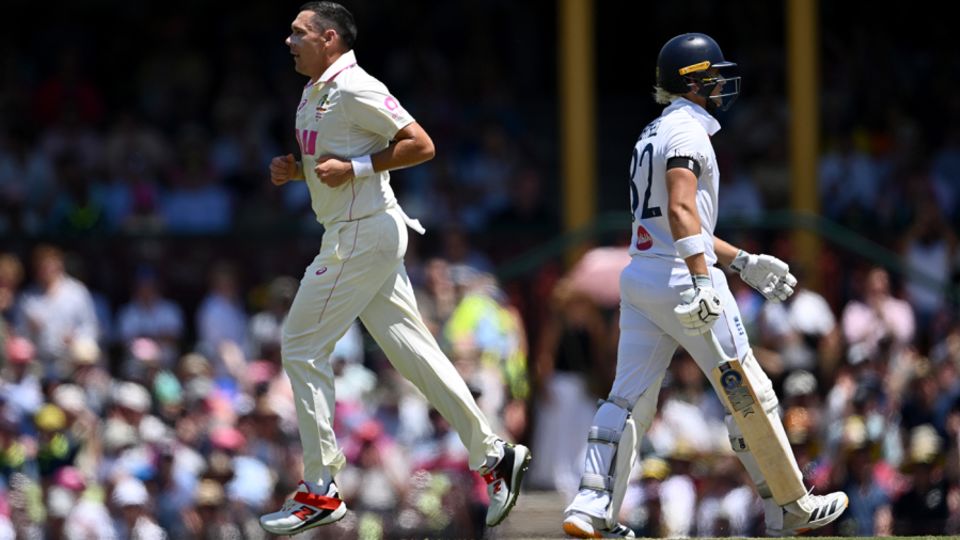
Bethell did not open his account until his 15th ball when he cut Starc through backward point for a boundary, but it was respite amid familiar woe for England’s batters.
After swatting a short ball to the fence, Crawley’s latest teaser ended when he fell lbw to a full delivery from Michael Neser before Bethell nicked off to Boland, who had moved over the wicket.
At this juncture, there were fears of another frantic innings with Cricket Australia’s hierarchy no doubt watching on nervously. But Root and Brook batted sensibly to ensure England stabilised by lunch.
While he removed the monkey on his back after his brilliant ton in Brisbane, Root’s troubles in Australia have mostly remained this series. But this was a golden opportunity to settle in for the long haul despite him almost nicking off on the first delivery.
He nailed his next attempt at his trademark cover drive to get him going, while Brook’s first boundary was unsurprisingly less orthodox after top-edging Boland over the slips.
But Brook was then uncharacteristically restrained in a notable contrast to his madcap 41 in the first-innings at the MCG. Australia’s attack tried to bait him by settling into a length outside off stump but Brook mostly kept his aggressive instincts in check.
He had his eyes set on a belated conversion having made starts in each of his first innings this series and found himself in a nice groove with Root, who after lunch reached 40 for just the second time in the series.
Australia lacked inspiration on a slowing surface and they resorted to a short-ball tactic in the hope that Brook would lose his patience. It almost went to plan when Brook on 45 top-edged Starc into a gap on the leg side before he regrouped to whack Webster for a boundary to bring up a 63-ball half-century.
It followed Root’s half-century off 65 balls as the pair appeared set to bat through the session until the thick clouds started to close in on the ground. Play was halted due to bad light before the weather deteriorated – although it did eventually clear up but stumps was instead called.
England opted against selecting Shoaib Bashir, meaning their first-choice spinner of recent years did not feature in the entire series. Seamer Matthew Potts is making his series debut after replacing Gus Atkinson, who was ruled out with a hamstring injury picked up in the fourth Test.
Brief scores: [Day 1 Stumps]
England 211 for 3 in 45 overs (Harry Brook 78*, Joe Root 72*; Mitchell Starc 1-53, Michael Neser 1-36, Scott Boland 1-48) vs Australia
[Cricinfo]
Latest News
Venezuela’s Maduro arrives in New York after ‘capture’

After months of threats and pressure tactics, the United States has bombed Venezuela and toppled its president, Nicolas Maduro, who was seized and taken to New York, where he will be put on trial.
Maduro arrived on Saturday evening at a military base in the US after his “capture” by US forces in Caracas.
Venezuelan Vice President Delcy Rodriguez has slammed the “kidnapping” of Maduro and said that he is “the only president of Venezuela”.
US President Donald Trump says the “,US will run Venezuela and tap its vast oil reserves, but he gave few details on how the US will do this.
The United Nations Security Council is due to meet today (Monday) on the matter, with UN Secretary-General Antonio Guterres saying the US actions set “a dangerous precedent”.
(Aljazeera)
-

 Sports7 days ago
Sports7 days agoGurusinha’s Boxing Day hundred celebrated in Melbourne
-

 News2 days ago
News2 days agoHealth Minister sends letter of demand for one billion rupees in damages
-
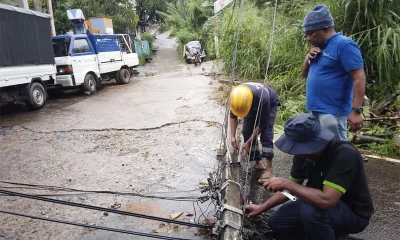
 News5 days ago
News5 days agoLeading the Nation’s Connectivity Recovery Amid Unprecedented Challenges
-

 Features6 days ago
Features6 days agoIt’s all over for Maxi Rozairo
-

 Opinion4 days ago
Opinion4 days agoRemembering Douglas Devananda on New Year’s Day 2026
-
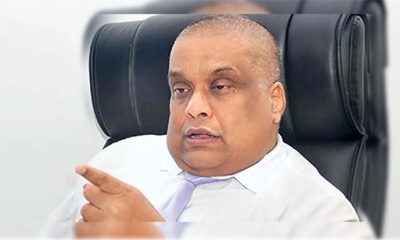
 News6 days ago
News6 days agoDr. Bellana: “I was removed as NHSL Deputy Director for exposing Rs. 900 mn fraud”
-
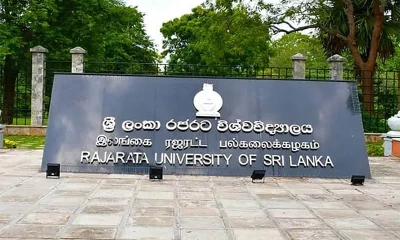
 News5 days ago
News5 days agoDons on warpath over alleged undue interference in university governance
-

 Features6 days ago
Features6 days agoRebuilding Sri Lanka Through Inclusive Governance


